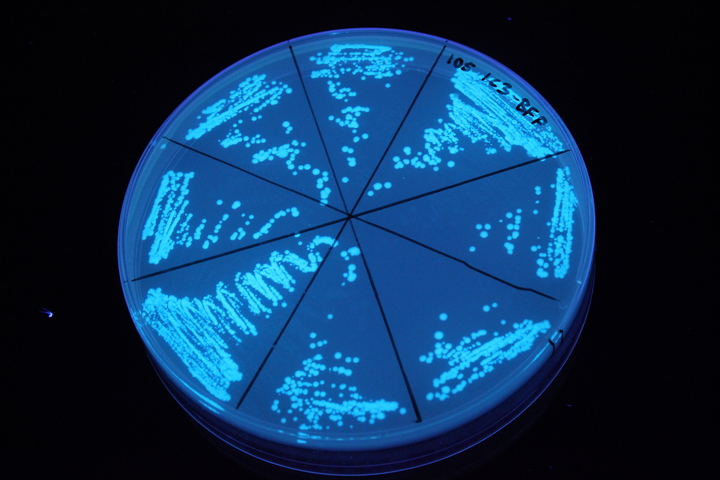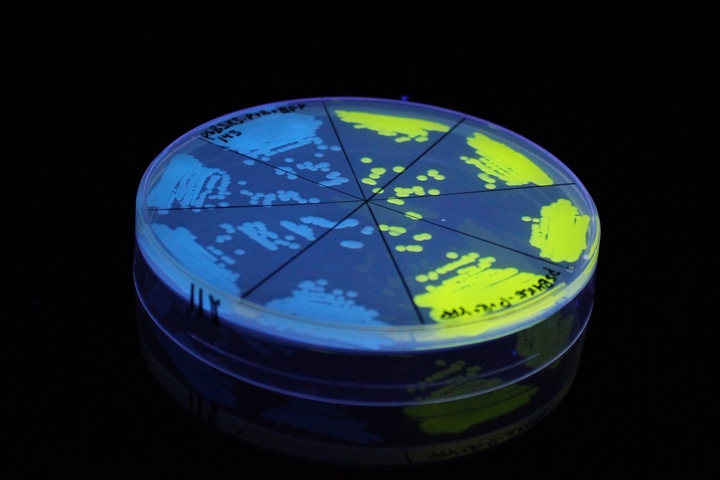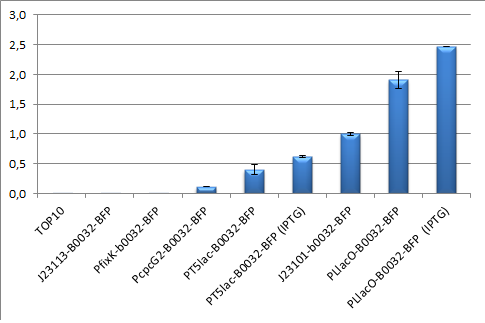Difference between revisions of "Part:BBa K592100"
| Line 14: | Line 14: | ||
===Usage and Biology=== | ===Usage and Biology=== | ||
| − | This part is useful as a reporter | + | This part is useful as a reporter. |
[[Image:A14 UU.JPG|400px]] | [[Image:A14 UU.JPG|400px]] | ||
[[Image:A16 UU.jpg|400px]] | [[Image:A16 UU.jpg|400px]] | ||
| − | The images above show ''E coli'' constitutively expressing mTagBFP <partinfo>K592100</partinfo> (blue) and YFP <partinfo>K592101</partinfo> (yellow) illuminated on a UV table. | + | '''iGEM11_Uppsala-Sweden'''. Fluorescence on UV table. The images above show ''E coli'' constitutively expressing mTagBFP <partinfo>K592100</partinfo> (blue) and YFP <partinfo>K592101</partinfo> (yellow) illuminated on a UV table. |
| + | |||
| + | |||
| + | |||
| + | [[Image:Promoter characterization.png]] | ||
| + | |||
| + | '''iGEM11_Uppsala-Sweden'''. BFP used as reporter. This part has been successfully used as a reporter gene for promoter characterization using flow cytometry. The excitation peak at 399 nm makes it well suited for use in flow cytometers using a 407 nm violet laser such as the FACSAria II, and the emission peak at 456 works well with a DAPI filter (band pass 450/40). | ||
| + | |||
===References=== | ===References=== | ||
Revision as of 01:46, 22 September 2011
Blue Fluorescent Protein (mTagBFP)
This part codes for the bright blue fluorescent protein mTagBFP. mTagBFP is a monomeric protein with a narrow fluorescence emission spectrum with a maximum at 456 nm. It has a tyrosine-based chromophore, giving it substantially higher brightness, faster chromophore maturation and higher pH stability than blue fluorescent proteins with a histidine in the chromophore. Subach et. al. started with a red fluorescent protein (TagRFP) and converted it to a bright blue monomeric protein. See the article listed in source. The sequence has been codon optimized for expression in E coli by DNA 2.0.
Subach et. al. reported the following data:
Excitation peak: 399 nm. Emission peak: 456 nm. Maturation Half-Time (min): 13. Relative brightness to EBFP2: 1.82. Extinction Coefficient (M-1 cm-1): 52000. Quantum Yield: 0.63.
Usage and Biology
This part is useful as a reporter.
iGEM11_Uppsala-Sweden. Fluorescence on UV table. The images above show E coli constitutively expressing mTagBFP BBa_K592100 (blue) and YFP BBa_K592101 (yellow) illuminated on a UV table.
iGEM11_Uppsala-Sweden. BFP used as reporter. This part has been successfully used as a reporter gene for promoter characterization using flow cytometry. The excitation peak at 399 nm makes it well suited for use in flow cytometers using a 407 nm violet laser such as the FACSAria II, and the emission peak at 456 works well with a DAPI filter (band pass 450/40).
References
[http://www.ncbi.nlm.nih.gov/pubmed/18940671] Subach, O. M., I. S. Gundorov, et al. (2008). "Conversion of red fluorescent protein into a bright blue probe." Chem Biol 15(10): 1116-24.
Sequence and Features
- 10COMPATIBLE WITH RFC[10]
- 12COMPATIBLE WITH RFC[12]
- 21COMPATIBLE WITH RFC[21]
- 23COMPATIBLE WITH RFC[23]
- 25COMPATIBLE WITH RFC[25]
- 1000COMPATIBLE WITH RFC[1000]



